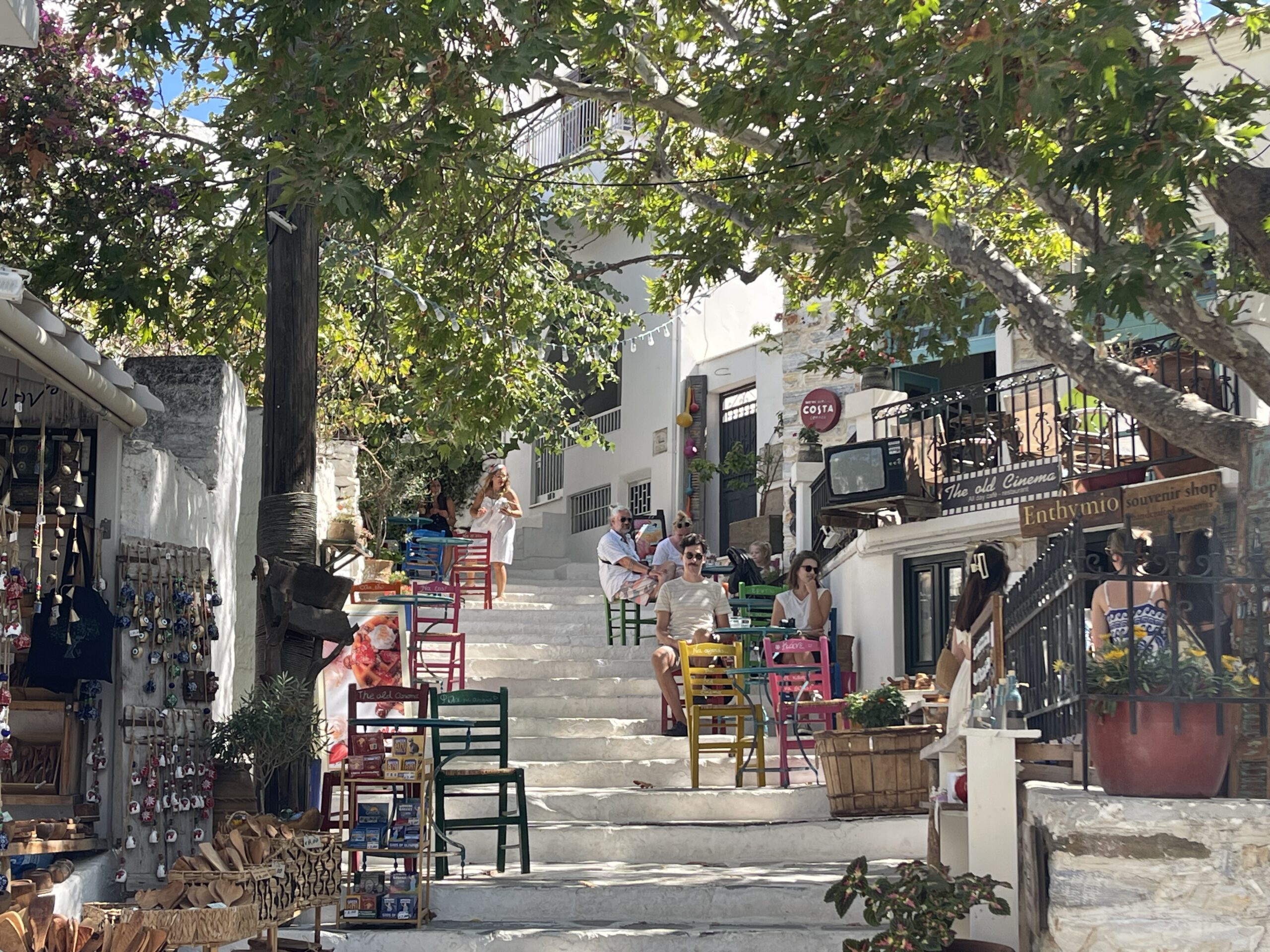Discovering the beauty of Filoti, Naxos’ mountain haven that preserves the island’s charm
A few weeks ago, I took a two-day trip to Naxos to find out more about the small, mountaintop villages on the island that, despite the onslaught of tourism, they have maintained their irresistible charm. I started with Filoti, a mountain village that two friends of mine from Slovenia had recently visited and they raved about it. The drive up took me through olive groves and winding roads, and soon enough, the sea was behind me, and the peaks of Mount Zas rose ahead. By the time I reached Filoti, I realized this wasn’t just a quick stop—it felt like stepping into another rhythm of life.
The village is larger than I expected, around 1,800 people live here—but it still has that cozy, traditional vibe. Whitewashed houses climb the hillside, balconies spill with bougainvillea, and little alleyways beg to be explored. In the main square, a giant elm tree stretches its branches like an umbrella over cafés and tavernas. I sat down under its shade with a coffee, watching locals greet each other like old friends while tourists, like me, tried to blend in.
What struck me most was how alive the traditions still are. Everywhere I turned, there were reminders of the village’s agricultural roots—olive oil shops, butchers selling local lamb, and of course, Filoti’s famous arseniko cheese. A friendly shop owner insisted I try a slice, sharp and tangy, and I couldn’t resist buying some for later.
With the weather still warm for fall—just cool enough for a light sweater—it was perfect for wandering. I followed the narrow streets past small chapels, old stone fountains, even a castle and I couldn’t help but imagine what it must be like here in summer, when festivals light up the square with music and dancing. Filoti is also the gateway to Mount Zas, where a trail leads to the highest point in the Cyclades. Legend says Zeus himself grew up on this mountain. I didn’t have time for the full hike, but the thought of those sweeping views makes me want to come back. I did however have the time to stop by the main church at Filoti, the Church of Panagia Filotitissa, dedicated to the Assumption of the Virgin Mary. A friendly priest told me that the church was built towards the end of the 17th century but was consecrated on August 15 of 1806. I debated with myself about whether I should stay overnight. The village feels like the kind of place where slowing down pays off, and there’s so much more nearby to discover, hidden chapels, hiking trails, and, of course, more food to taste. Filoti isn’t just a stop on Naxos—it feels like the heart of the island.
For the next day I had two more villages on my list: Halki and Apiranthos. I was hoping I could visit them both and still make it to the port on time to catch the evening boat back to Athens.
Theo Kalomirakis

